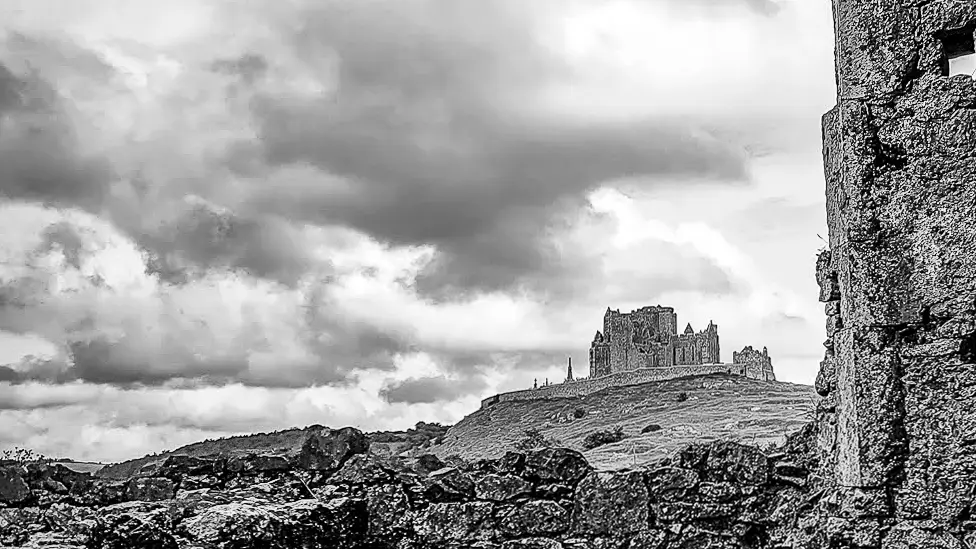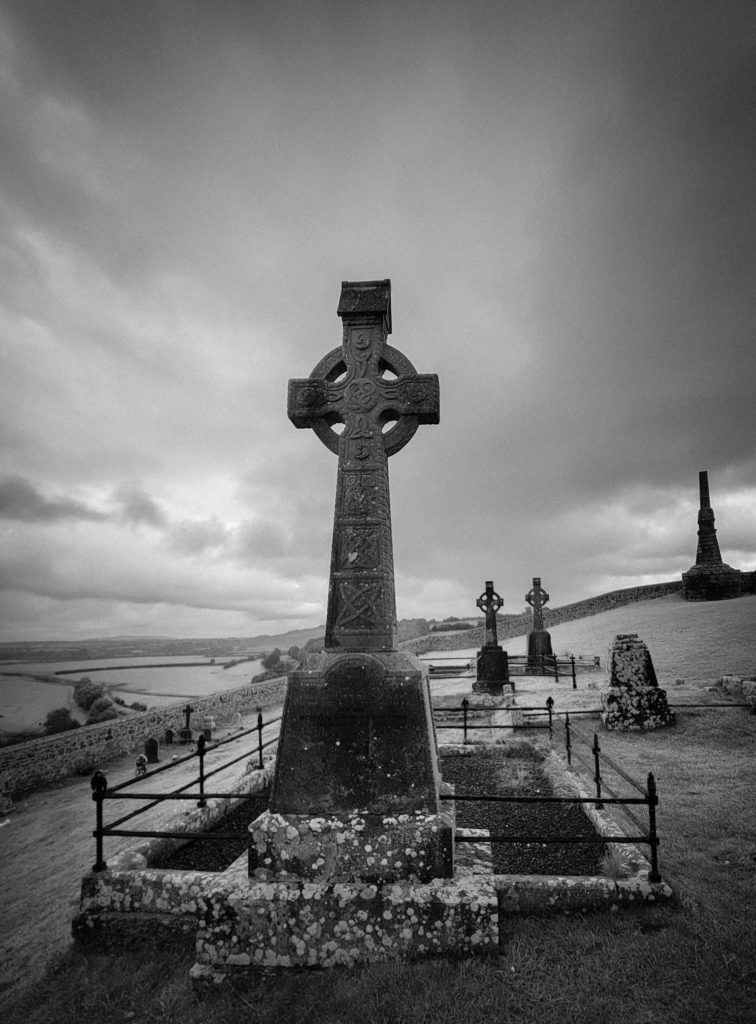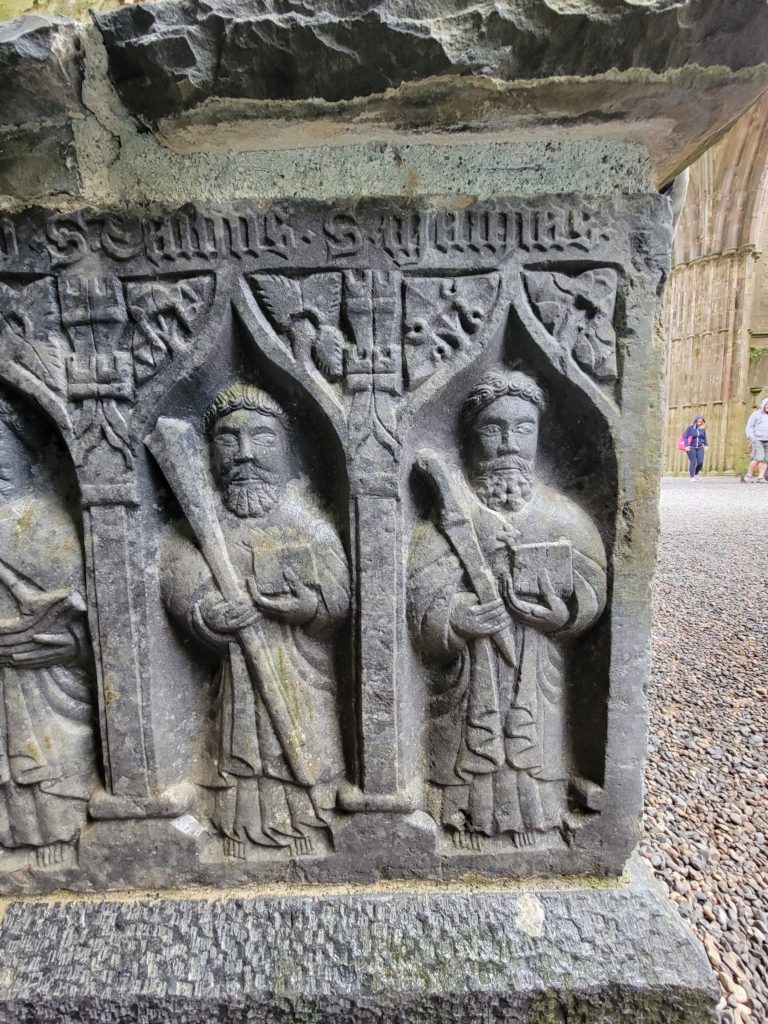
Why You Should Visit the Rock of Cashel
The Rock of Cashel has played a pivotal role in the history of Ireland. Though it’s a relatively small site, the imposing fortress perches majestically atop a limestone outcrop in County Tipperary, and has witnessed centuries of intrigue, power struggles, and religious significance.
Its easy access from Dublin, Cork or Limerick, its imposing architecture, fascinating history, and beautiful setting make the Rock of Cashel an iconic landmark and popular attraction.
Table of Contents
What You Need to Know
Hours of Operation:
- Mid-March to Mid-October 9AM to 5:30 PM. Last entry at 4:45 PM
- Mid-October to Mid-March 9AM to 4:30 PM. Last entry at 3:45 PM
- Closed 24-26 December
Group/Senior: €6.00
Child/Student: €4.00
Family: €20.00
Entry to Cormac’s Chapel is by guided tour only. Limited tickets must be purchased on site.
- Be prepared for rain. An umbrella or waterproof jacket and shoes is always a good idea.
- The Rock of Cashel is spread over a significant area, and exploring the various structures and ruins can take 30-90 minutes.


Historical Significance of the Rock of Cashel
The Rock of Cashel holds immense historical significance, dating back over a thousand years. Originally, the site served as a fortress for the kings of Munster, who ruled the region from the 4th to the 12th century.
In 1101, the site was gifted to the Church, and construction of a grand cathedral began. This marked the beginning of the Rock of Cashel’s transformation into a religious center. Over the centuries, various structures were added, including Cormac’s Chapel, a stunning example of Romanesque architecture. The Rock of Cashel became a place of pilgrimage, attracting both Irish and international visitors who sought solace and spiritual enlightenment.
In 1647, during the Irish Confederate Wars, the fortress was besieged by parliamentary forces. The subsequent massacre of the defenders left a lasting mark on the site’s history. Today, visitors can explore the ruins and imagine the tumultuous events that unfolded amidst these ancient stones.
Legends and Myths Surrounding the Rock of Cashel
The Rock of Cashel is steeped in legends and myths that have been passed down through generations. One of the most famous tales involves St. Patrick, the patron saint of Ireland. Legend has it that St. Patrick visited the Rock of Cashel and converted the King of Munster to Christianity by driving his staff into the ground, which miraculously turned into a tree. This event solidified the Rock of Cashel’s status as a sacred site and cemented its association with St. Patrick.
Another intriguing legend tells of a pact made with the devil. According to the story, a chieftain named Cormac MacCarthy desired to build a magnificent chapel atop the Rock of Cashel. The devil offered to complete the construction overnight in exchange for the soul of the first living creature to enter the chapel. Cleverly, Cormac tricked the devil by releasing a rooster who entered the chapel, thus foiling the devil’s plans.
The Rock of Cashel also features in the mythological cycle of Irish folklore. It is said to be one of the places where the Tuatha Dé Danann, a supernatural race in Irish mythology, descended from the heavens to rule over Ireland.
Architectural Features of the Rock of Cashel
The Rock of Cashel is renowned for its impressive architectural features that showcase different periods of its history. The most prominent structure is Cormac’s Chapel, built in the 12th century. This chapel is a masterpiece of Romanesque architecture, characterized by round arches, intricate carvings, and decorative details. The interior is remarkable for preserved Romanesque frescoes, a truly rare occurrence, and the only ones in all of Ireland.
Adjacent to Cormac’s Chapel is the grand cathedral, originally constructed in the 13th century. Although now in ruins, the cathedral still retains its Gothic splendor, with towering arches and remnants of stained glass windows.
The Rock of Cashel also boasts several impressive Celtic crosses, standing proudly amidst the ruins. These intricately carved crosses are adorned with knotwork and depict scenes from biblical stories. They serve as a testament to the artistic skills of the craftsmen who created them and provide a glimpse into the religious symbolism of the time.
The Rock of Cashel in Irish Literature and Folklore
The Rock of Cashel has long been a source of inspiration for Irish writers and poets. Its majestic presence and rich history have captured the imaginations of many, resulting in numerous references in literature and folklore. One of the most famous literary works featuring the Rock of Cashel is William Butler Yeats’ poem, “The Tower,” which contemplates the passage of time and the enduring nature of the site.
In addition to literature, the Rock of Cashel has also played a role in traditional Irish music and folklore. Songs and ballads have been composed, recounting the tales and legends associated with the site. These songs serve as a reminder of the Rock of Cashel’s cultural significance and its place in the hearts of the Irish people.
Events and Festivals at the Rock of Cashel
Throughout the year, the Rock of Cashel hosts various events and festivals that celebrate its history and cultural heritage. One such event is the Rock of Cashel Summer Concert Series. Held annually, this series showcases talented musicians and performers who take to the stage against the backdrop of the Rock of Cashel. It’s a unique opportunity to enjoy live music in a truly awe-inspiring setting.
In addition to music, the Rock of Cashel also hosts historical reenactments and medieval festivals. These events transport visitors back in time, allowing them to experience the sights and sounds of medieval Ireland. From jousting tournaments to traditional crafts and activities, these events provide a glimpse into the past and create a vibrant atmosphere at the Rock of Cashel.
Nearby Attractions and Day Trips from the Rock of Cashel
If you have more time, consider venturing to the picturesque town of Cahir. Here, you can visit the impressive Cahir Castle, one of Ireland’s largest and best-preserved castles. The castle’s towering walls and intricate architecture provide a glimpse into Ireland’s medieval past.